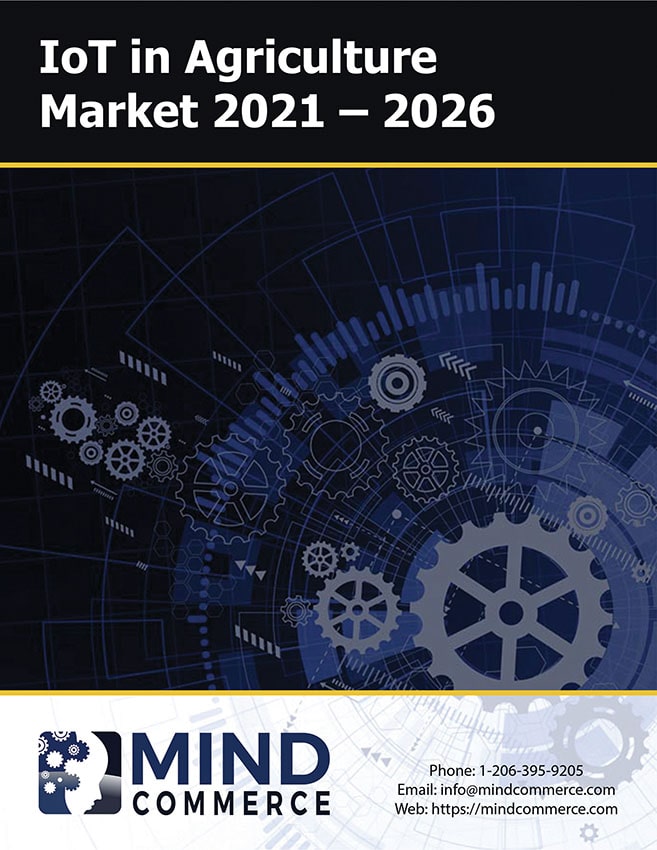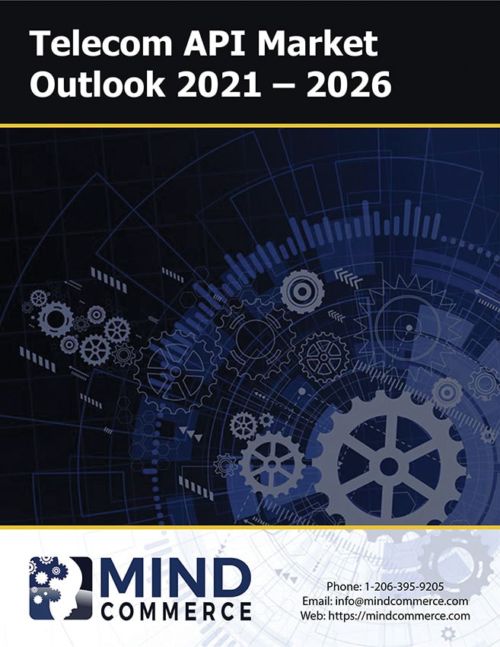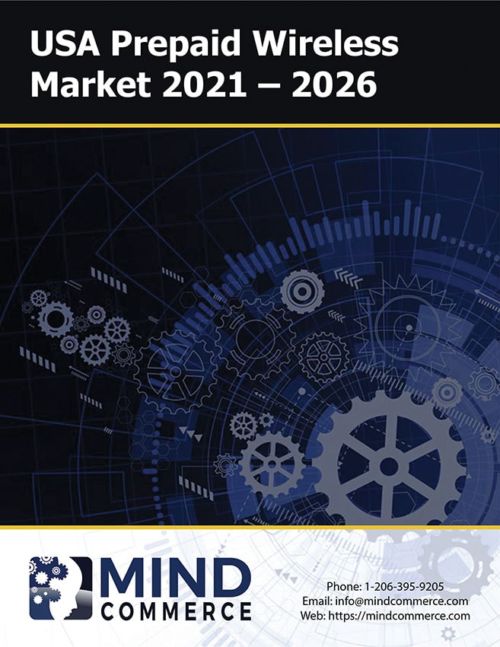Description
The general term, AgriTech, represents the use of technology in agriculture, horticulture, and aquaculture for purposes of improving yield, efficiency, and profitability. The commercial agriculture industry is rapidly becoming one of the most IoT data-driven markets. The IoT in agriculture market leverages technologies for greater farming, ranching and aquaculture efficiency and effectiveness.
IoT in Agriculture Market Dynamics
There is currently an acute need for greater agricultural efficiency and effectiveness in the wake of the recent pandemic. Many agricultural commodities such as corn, soy, and cotton are in backwardation as of the publication of this report, which means that the current price of an underlying asset is higher than prices trading in the futures market. This is atypical for commodities as inflation generally tends to make their price increase over time.
However, recent labor shortages due to the COVID-19 pandemic, coupled with an uptick in economic activity associated with economies reopening after the initial pandemic shut-downs, has led to supply chain discontinuities and resulting unbalanced supply and demand dynamics. This is reflected in the Bloomberg Agriculture Spot Index, which measures the price movements of agricultural commodities, has risen from 227.38 in May 15th 2020 to a recent high of 386.47 in April 23rd 2021, representing a 70% increase in a little more than one year.
While the aforementioned commodity price and supply challenges represent a more near-term acute issue, there remain longer-term structural market drivers for improvements in agricultural technologies. As the world population grows, so does the demand for food. The UN estimates that Earth will need to produce 70% more food by 2050 to support these growing populations. Complicating matters, natural resources are slowly being depleted and usable agricultural land is shrinking.
There is an ever-increasing need for intelligent and highly scalable agriculture solutions. Increasingly, the agriculture business is becoming controlled by companies that are not conventional agriculture experts. Mind Commerce sees a shift from conventional agriculture to farm management. With this shift, software developers and predictive data analytics companies will take control of end-to-end agricultural operations.
Agriculture has transformed in the last few decades from small to medium farming operations to highly industrialized, commercial farming that is concentrated among a few large corporations. However, as various Internet of Things (IoT) technologies mature beyond the R&D phase and go into general production, costs for everything from drones/UAVs to sensors will continually decrease, making connected agriculture more accessible to smaller farms and third world countries.
With this agricultural transformation, farming operations are increasingly a highly mechanized and computer-driven operation. This allows corporations to treat agriculture like manufacturing in the sense that measurements, data, and control is very important to manage costs, maximize yields, and boost profits. This shift in managing agricultural operations will bring various benefits to farming and livestock management, including enhanced crop quality and quantity, improved use of resources and farm equipment, real-time monitoring of farms, animals and machines, automated irrigation systems, fertilizer spraying and pest control.
The general term, AgriTech, represents the use of technology in agriculture, horticulture, and aquaculture for purposes of improving yield, efficiency, and profitability. The commercial agriculture industry is rapidly becoming one of the most IoT data-driven markets. With the emergence of M2M, IoT, and advanced data analytics technologies, data is becoming available that was previously uncollectible. The application of various AgriTech analytics tools and methodologies, such as predictive analytics will provide substantial enhancements to agriculture operations.
IoT in Agriculture (IoTAg) represents a more specific use of technology wherein agricultural planning and operations becomes connected in ways previously impossible if it were not for advances in sensors, communications, data analytics and other areas. Virtually every aspect of agriculture that can be automated, digitally planned, and managed will benefit from IoT technologies and solutions.
Accordingly, we see IoTAg fundamentally transforming the way agricultural operations and farms are managed, which will bring various benefits to farming, including enhanced crop quality and quantity; improved use of resources and farm equipment; real-time monitoring of farms, animals, and machines; and automated irrigation systems, fertilizer spraying, and pest control.
The implementation of IoTAg is intended to facilitate greater agricultural efficiency and effectiveness. Essentially, IoTAg solutions, coupled with artificial intelligence and a few other supporting technologies, enable smart agriculture. IoTAg solutions provide many intelligent agriculture benefits such as increase of yields, monitoring crops, automating operations, and reducing waste.
IoT technologies allow farmers and ranchers to enhance productivity. For example, if part of the irrigation system malfunctions, sensors can provide alerts, allowing the problem to be addressed in a timely fashion. These technologies also allow agricultural staff to view operational conditions from anywhere and make changes with real-time solutions.
Illustrative examples of smart agriculture solutions include the following:
- Greenhouse Automation: With IoT and sensors, greenhouses can be almost entirely automated. Real-time data on greenhouse conditions, including temperature, lighting, soil condition, and humidity, can be examined and modified automatically. Users can input desired parameters, and automation systems adjust the ecosystem to match them.
- Cattle Monitoring/Management: IoT sensors can be attached to animals to monitor and record their health. These solutions can collect data on livestock health, well-being, and location. Sensors can identify sick animals quickly, allowing farmers to separate them from the herd and reduce the spread of contagion. These sensors also save farmers cost in staffing expenses while making better use of their time.
- Harvesting Robotics: Agribots are being used to harvest crops, helping to fill the void of workers. These bots can pick fruits and vegetables 24/7, using robotic arms and digital image processing to do so. Companies can control the quality of their products better by utilizing these bots, as they determine when to harvest based on programmed parameters.
One of the foundational elements of the IoTAg market are sensors, which may be used in a variety of different use cases and applications, such as precision agriculture scenarios in which moisture is carefully monitored to ensure that crops receive sufficient water with minimal human intervention. Examples of sensors in action include the following:
- Optical Sensors: These sensors can be placed on vehicles, drones, or satellites, and use light to measure the properties of soil. Optical sensors measure various light frequencies in multiple light spectrums and provide farmers with insights to plant color data and soil reflectance.
- Location Sensors: These sensors use signals from GPS satellites to determine precise location. Precision accuracy relies upon location sensors, as nearly all other functions are based on location.
- Mechanical Sensors: Mechanical sensors determine soil compaction using a probe that records resistive force. This type of technology is already deployed on large tractors, used to gauge pulling requirements.
- Electrochemical Sensors: These sensors provide farmers with pH and soil nutrient levels. Insights provide users with knowledge of soil condition, allowing them to make changes accordingly.
- Airflow Sensors: Airflow sensors measure the permeability of the air. These measurements can be taken either in motion or at specific locations. Soil properties can be determined with airflow sensors, including soil type, structure, moisture level, and compaction.
- Dielectric Soil Moisture Sensors: These sensors measure moisture using the dielectric constant. an electrical property. This property changes depending on the concentration of moisture in the soil.
- Accelerometer Sensors: These sensors detect variations in movement and vibration and are used for predictive maintenance. Accelerometer sensors are typically used on motors and moving components, such as tractors. Slight changes in movement and vibration alert users to a need for maintenance or part replacement.
Another emerging element of IoTAg and smart agriculture in general is the use of aerial drones as UAVs may be used for a variety of purposes that minimize manual labor while improving the overall efficacy of farming, aquaculture and/or ranching operations such as detecting differences in heat signatures and use of robotics for planting, spraying, and harvesting.
Mapping farms using aerial drones and terrestrial robots is rapidly becoming table-stakes for connected agriculture. Agribusiness will also deploy drones/robots to obtain real-time data regarding many aspects of farming operations. This will be a combination of aerial and land perspectives/images captured using multi-spectrum cameras and sensors installed on agricultural drones/robots. Additional examples of UAVs and autonomous terrestrial robot use cases in smart agriculture include the following:
- Spraying/Crop-dusting: Agricultural drones can weigh over 55 pounds, applying fertilizers and pesticides to crops with far greater accuracy than traditional uses. This not only saves farmers money through saved resources but reduces labor and exposure to chemicals.
- Precision Agriculture: Drones can constantly monitor crop conditions from the air and find problems that farmers may not otherwise see. Precision agriculture promotes maximum efficiency and use of resources on a farm.
- Irrigation: Drones, aided by IoT sensors, can detect when different crops need to be watered based on soil conditions and history. These drones precisely provide the required amount of water, saving farmers time and money.
- Planting: Many hours of back-breaking labor can be saved by using drones to plant crops. IoT solutions provide drones with insights on when to plant, how far apart to plant, and when to harvest for optimal yield.
- Weeding: Land-based drones are robots utilized for weeding around crops. Using digital image processing, these bots sort through an array of images, detecting weeds and removing them either manually or with pesticides. For example, a company named ecorobotix has developed an autonomous robot for precision weeding.
- Mapping/Surveying: Agricultural drone software typically prompts users to select the area that needs to be covered. Once selected, the software automates a drone flight path to survey the area most effectively. Advanced drones can use GPS functions to automatically take pictures with their built-in cameras.
- Predictive Analytics: Farmers use information collected by sensors on the farm to make decisions based on real-time data. These insights allow farmers to predict production rates, manage risks for individual crops, and plan for storage.
The implementation of combined AI and IoT solutions for agriculture will provide a substantial lift for both operational efficiency and effectiveness. These Artificial Intelligence of Things (AIoT) solutions will transform the interpretation and use of IoT data from a largely human-based activity to one that is primarily machine-oriented.
This will lead to fewer errors and savings in operational costs such as data analytics visualization for the sake of human viewing, interpretation, and decision-making. For example, the Mind Commerce Artificial Intelligence of Things (AIoT) Solutions: AIoT Market by Application, Service, and Industry Vertical 2021 – 2026 report identifies a $1.96 billion global opportunity for AIoT solutions in agricultural monitoring alone.
IoT in Agriculture Market Report
This report assesses the technologies, companies, and solutions for IoT in agriculture. The report evaluates the overall marketplace and provides forecasts for sensors (and other devices), services, solutions, and data analytics globally, and regionally for the period 2021 to 2026. Forecasts include precision agriculture, indoor farming, livestock, and fisheries.
Forecasts cover IoT in agriculture solutions globally and regionally including: Intelligent Farm Equipment, Smart Sensor Systems, Intelligent Drones, Smart Farm Robots, and Software. Within the Smart Sensor area, the report forecasts the following: Sensors for Detecting Physical Properties, Sensors for Chemical Analysis and Applications, Sensors for General Monitoring, Sensors for Quality, Sensors for Autonomous Agriculture, and others.





